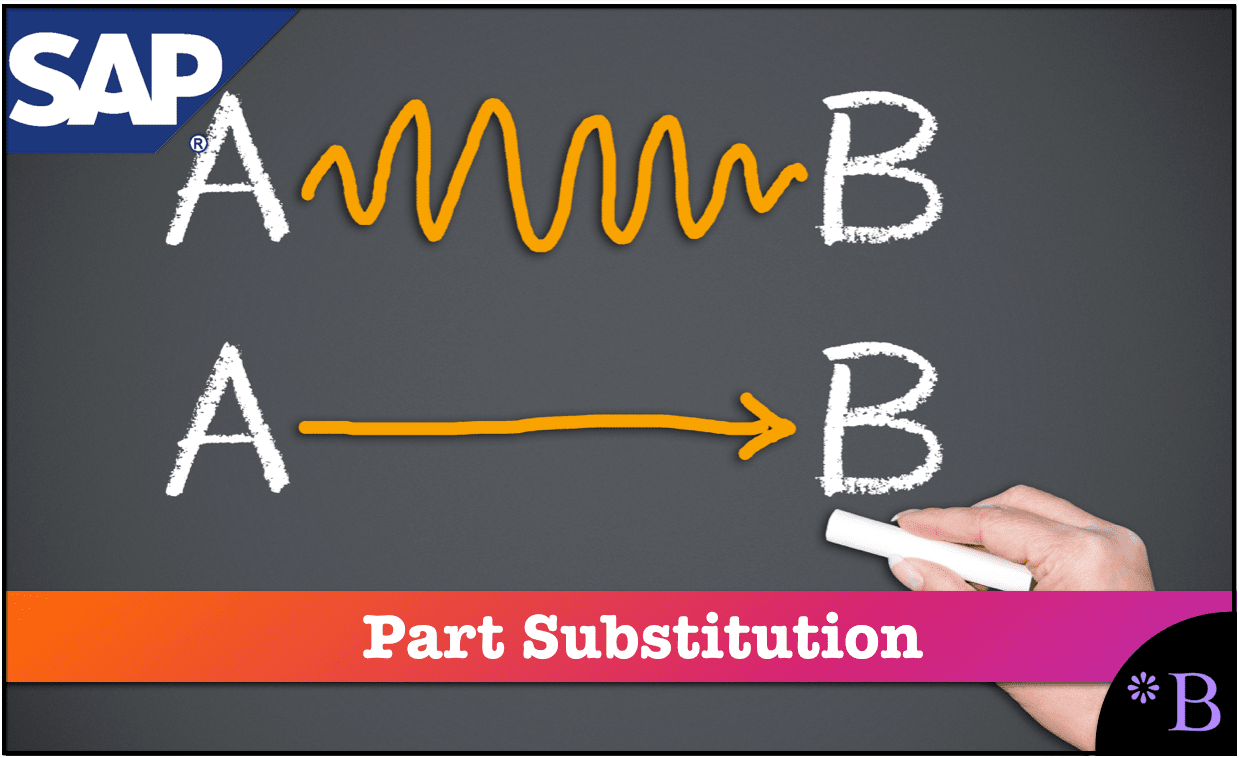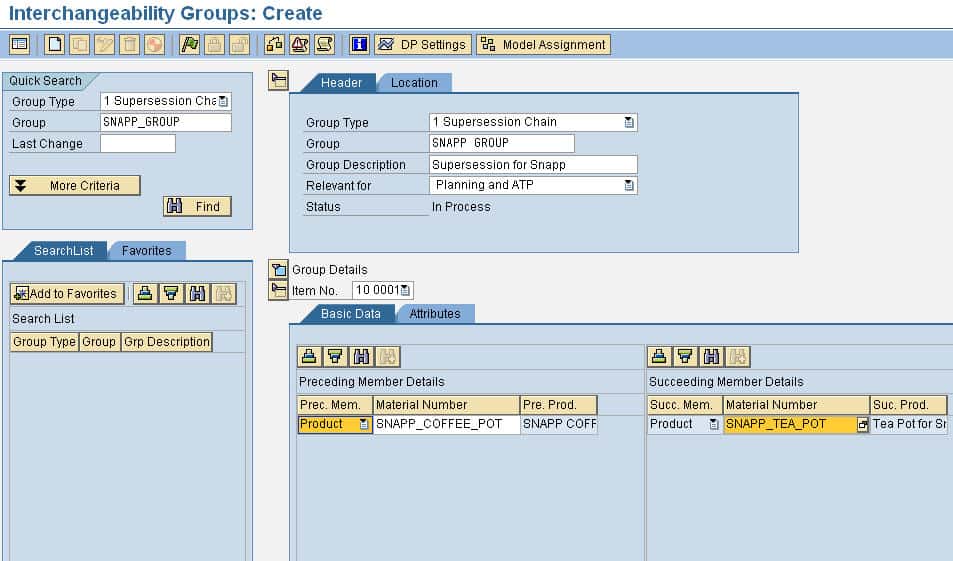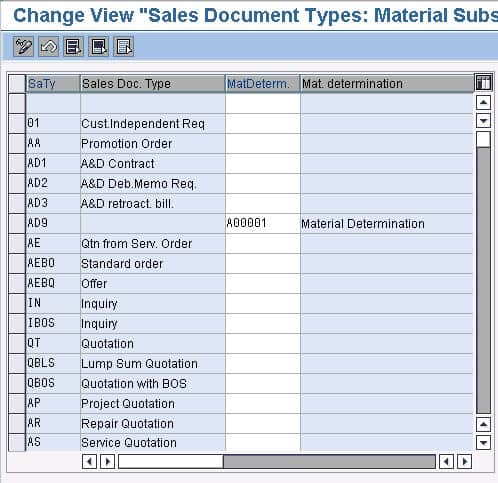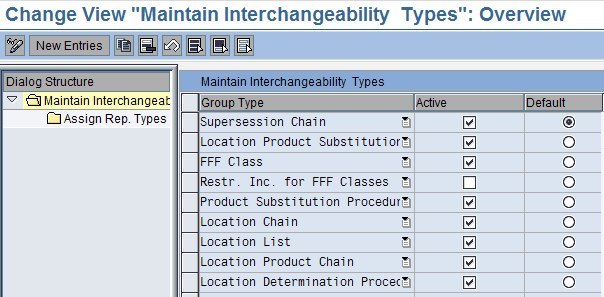How to Best Understand Supersession and Interchangability in SAP
Executive Summary
- Supersession is how parts are set up as interchangeable or substitutable.
- There are different types of part supersession.
- Where product interchangeability functionality is set up in SAP APO.

Introduction: Getting the Heart of Supersession
Supersession and part substitution is a critical component to supply chain planning that is only increasing due to the constant increase in product turnover and product proliferation. You will learn about supersession as well as where it can be found throughout SAP.
What is Part Supersession?
Supersession is one of the most important functions in any service parts planning system. Supersession is used to both:
Supersession is used to both:
- Substitute one part for another part
- Obsolesced parts due to engineering changes driven by PLM (Product Lifecycle Management) that need to be replaced by newer versions
The supersession configuration in service parts planning systems allows this to be performed automatically during the planning. In MCA SPO, this supersession is handled by configuring whether the part is subject to supersession and the type of supersession (One-way or Two-way that applies). We will use the description of supersession in the MCA Service Parts Optimizer Glossary of Terms:
Supersession in SAP ERP
When an external system specializing in service parts planning tells SAP what to do, SAP can execute the external system’s recommendations. However, the question arises about what SAP ECC’s capabilities are with supersession.
According to SAP web sources, supersession resides in:
- Advanced Planning and Scheduling (in SAP APO)
- Supply Chain Management
- Service Parts Management (within SAP APO)
- In SAP ECC
Within SAP ECC, supersession is approximated by the Material Determination functionality. However, within SAP APO, SAP states that the rule-based Available to Promise check does provide this functionality. In ECC, product substitution functionality is called Material Determination (MD). The SAP definition of Material Determination is:
“Interesting features of material determination:
- MD happens during the sales order process.
- Sales document types (A&D Contract, Repair Quotation, etc.) can be set for MD.”
Where Should Supersession Be Performed
Supersession logic can be maintained in both the planning system and the execution system. That is both in SAP ERP and in an external planning system. They can be for different purposes, however. A few options are:
- Planning supersession can be performed in the external planning system. Simultaneously, execution supersession can be performed in SAP ECC (for sustainment, production supersession is a different matter).
- Planning supersession can be performed in the external planning system with no sustainment supersession data maintained in SAP ECC. However, inventory planners can still use the external planning system user interface to determine the superseded part and execute the SAP supersession.
In either case, SAP will respect the supersession performed in SAP as it would be inherent in the external planning system. The basic questions are:
- Is having the execution supersession available in SAP (allowing automated supersession within SAP ECC) worth the additional effort in configuring MD and in the continual maintenance of this supersession list in SAP?
Is the MD functionality capable of providing similar functionality to an external planning system? That is, is the substitution functionality, which is relatively basic. This would provide automated supersession worth maintaining instead of looking at the external planning system user interface and reading supersession relationships from the external planning system.
Where is Product Interchangeability Functionality in SAP APO?
As discussed in the previous post, product interchangeability functionality resides in the following APO modules.
- DP
- SNP
- CTM
- PPDS (Although realistically, I have never seen this activated)
- GATP
- SPP
All of these modules offer discontinuation functionality, at least forward discontinuation. In the previous post, DP was discussed, so we will focus on the product interchangeability in the other modules. To create an interchangeability group, in the master data, the preceding material is connected to the succeeding material and is assigned to the following:
- Group type
- Group
Supersession in the IMG
Supersession is set up for all forms of interchangeability in the IMG path
APO –> Master Data –> Application Settings — > Production and Location Interchangeability –> Maintain Interchangeability Types and Assign Replacement Types
This is eventually configured in the Interchangeability Master, which you can see here:
Here, you can set the default group type. In this case, we have it set to Supersession Chain. This Supersession Chain is set up at this link.
At least a part of product interchangeability is a subset of product lifecycle management (PLM). This relates to when one material is substituted for another material to absorb the material from the system. The PLM functionality in APO planning is described here.
PPDS Interchangeability
On the PPDS tab of the product location master, there is a selection called “planning package.” In the case of a planning package for a supersession chain, this corresponds to the condition that the products in a supersession chain always have to be planned together in procurement planning.

This is covered in more detail here.
The most advanced form of product interchangeability in the APO suite is found in SPP. This functionality is described in this post.
The supersession configuration in service parts planning systems allows this to be performed automatically during the planning. In MCA SPO, this supersession is handled by configuring whether the part is subject to supersession and the type of supersession (One-way or Two-way that applies).
We will use the description of supersession in the MCA Service Parts Optimizer Glossary of Terms:
Supersession in MCA (now PLC)
“Used to specify that a Part should be replaced with a different Part (referred to as a Planned Part). Supersession processes are part of the forecasting batch process. They transform demand, population and inventory data to reflect it on the currently planned versions of the Part. Three types of supersession processes are performed on data within SPO: Demand Supersession, Contract Population Supersession and Inventory Supersession” – MCA Glossary
Supersession Type
“Indicates the type of Supersession applicable to a Part. This value (ONE-WAY or TWO-WAY) is used to determine if inventory of the superseded Part can be used for satisfying demands for the superseding Part. Inventory of TWO-WAY superseded Parts is added to the inventory of their superseding Parts, whereas inventory of ONE-WAY superseded.” – MCA Glossary
Supersession in SAP
When an external system specializing in service parts planning tells SAP what to do, SAP can directly execute the external system’s recommendations. However, the question arises about what SAP ECC’s capabilities are with supersession.
According to SAP web sources, supersession resides in:
- Advanced Planning and Scheduling
- Supply Chain Management
- Service Parts Management (within APO)
- In ECC
Supersession in SAP APO
SAP documentation states that its APO module has supersession capability. However, the SAP Service Parts Planning solution is so lightly installed (as of mid-2007) that it does not represent the supersession capability on a typical SAP install, specifically SAP ECC. However, outside of SPP, APO has supersession (called substitution or interchangeability outside of service parts). The way to arrive at it as of SCM 5.0 is to go to:
APO – Master Data – Application-Specific master data – Product and Location Interchangeability – Maintain Interchangeability group
You can apply the substitution here or if you are using CTM in the CTM profile. (see our sister blog for an explanation of CTM)
This is relatively simple; you can see from the screenshot that we have populated the following information:
- The Group Type (supersession chain)
- The Group name – SNAPP_GROUP
- The Group description
- What the supersession is relevant for (for both planning and ATP)
- Next, set the preceding part and the succeeding part.
- Finally, we save this, and we will have just created an Interchangeable Group.

Next, I need to assign a location. This means we can create supersession relationships that apply to particular locations but not to others.

The functionality of supersession – -interchangeability has been enhanced and is now located at:
Advanced Planning and Optimization (SAP APO) – Service Parts Planning (SPP) – Master Data and General Functions for SPP – Product Interchangeability in SPP
“The enhancement relates to the ability to use form fit function classes in addition to product supersession. “That is you can define a product as the leading product for each subgroup of a form fit function class. DRP then consolidates the demands and stock of the location products by adding the demand and stock of the non-leading location products with substitute orders to the demand and stock of the leading location product.” – SAP SCM 2007 Release Notes
Supersession in SAP SPP
There are two different possible directions of interchangeability for supersession:
- Forward interchangeability
- Fully interchangeability
SPP uses two scenarios (supersession and form fit function classes) for location product interchangeability.
- Supersession is where items are replaced or substituted for one another.
- Form fit function classes are where several products can be substituted if they have the same form fit and function.
The supersession in SPP is the same as that in the best-of-breed solutions that preceded SPP. One way, two way, many to one, one to many. These are set up with boolean logic of “AND,” “OR,” etc..
Business Corner
The importance of the master data for all forms of supersession can’t be emphasized enough. Suppose the implementation of SPP is the first time the client has implemented a service parts planning solution. In that case, it is unlikely that the supersession database (the database of linkages) is good enough to run the planning engine. This issue must be brought up as early as possible on the project. A client emphasized whether SPP would be ready from a functionality perspective regarding supersession without checking their supersession master data to see if it could support the SPP supersession functionality.
Replacement Strategy
In SPP, you can model supersession to create various replacement strategies. A replacement strategy is made up of a replacement type. SPP is possible only partially to replace a product or several predecessor products with one successor product or replace a predecessor product with several alternative successor products. Several replacement types are available:
- S_0L1L: 0:1 – Location substitution. Use this replacement type if a validity date is maintained for the predecessor location, a location substitute chain.
- S_0LP1LP: 0:1 – Location Product substitution. Use this replacement type if a validity date for the predecessor location product is maintained in the location product substitution chain.
There are, of course, many others – they are listed on page 361 of the SAP training material. However, things like the following are covered:
- Assembly
- Group
- Location
- Location Product
- Location List
Supersession in SAP ERP
Within SAP ECC, supersession is approximated by the Material Determination functionality. However, within SCM, SAP states that the rule-based Available to Promise check does provide this functionality. In ECC, product substitution functionality is called Material Determination (MD). The SAP definition of Material Determination is:
“Material determination enables the automatic substitution of materials in sales documents during sales order processing. For example, during the course of a sales promotion, the system can, during sales order entry, automatically substitute a material that has promotional packaging. A consumer product may have a special wrapper for, for example, the Christmas season. Using material determination, the system substitutes the material only during the specified period. Material determination is used for: Customer-specific product numbers with your own material numbers, International Article Numbers (EANs) with your own material numbers, Substituting discontinued materials with newer materials” – SAP Help
Interesting features of material determination
MD happens during the sales order process.
Sales document types (A&D Contract, Repair Quotation, etc.) can be set for MD.
Where Should Interchangeability be Performed?
Interchangeability logic can be maintained in both the planning system and the execution system. That is both in APO or external planning systems and SAP. They can be for different purposes, however.
A few options are:
- Planning supersession can be performed in an APO or external planning system. Simultaneously, execution supersession can be carried out in SAP ECC (for sustainment, production supersession is a different matter).
- Planning supersession can be performed in an APO or external planning system with no sustainment supersession data maintained in SAP ECC. However, inventory planners can still use the APO or external planning system’s user interface to determine the superseded part and execute the SAP’s supersession.
- In either case, SAP will respect the interchangeability performed in SAP as it would be inherent in the New Buy List from the APO or external planning system. The basic questions are:
- Is having the execution interchangeability available in SAP (allowing automated supersession within SAP ECC) worth the additional effort in configuring MD and in the regular maintenance of this interchangeability list in SAP?
- Is the MD functionality capable of providing functionality similar to that of APO or an external planning system? That is the substitution functionality, which is pretty basic. It would provide automated interchangeability worth maintaining instead of looking at the APO or external planning system user interface and reading interchangeability relationships from the APO or external planning system.
References
https://help.sap.com/saphelp_dimp50/helpdata/EN/f7/a62238b497a552e10000009b38f842/content.htm

